Why Crate Training Your Dog is Essential: A Guide for Dog Owners
Grab your leash and get ready to learn all about one of the most essential training techniques for creating a happy, healthy bond with your furry best friend. Crate training provides immense benefits for you and your pup by establishing a safe space, preventing destructive behaviors, assisting with house training, and more. This comprehensive guide will explore why proper crate training is necessary for dog owners.
Let’s be real, raising a dog can be ruff. From chewing everything in sight to struggling with separation anxiety, our canine companions can unintentionally turn our lives upside down. While crates may seem confining at first glance, they provide comfort, security and structure for our four-legged friends. Implemented correctly, crate training taps into a dog’s instinct to seek out a den-like enclosure. Your pup’s crate can become their favorite retreat with the proper introduction and positive reinforcement.
Now that we’ve covered the basics let’s dig into the nitty gritty details of crate training to raise a happy, well-adjusted dog. We’ll explore the types of crates, the ideal age to start training, benefits for your dog, preparation for success, effective strategies, and troubleshooting problems. Time to get your paws wet in mastering this essential training technique!
Understanding Crate Training
What is Crate Training?
Crate training teaches your dog to relax and feel comfortable spending time in a crate. It involves positive reinforcement techniques to help your pup view their crate as a safe space rather than a punishment. The main goal of crate training is to provide your dog with a personal den where they can retreat for naps, quiet time, and even overnight sleep. It teaches them bladder control and prevents destructive behaviors like chewing when you can’t supervise them. Proper crate training sets your dog up for success, whether left alone at home or needs to be crated during travel.
Types of Crates Used in Training
There are a few different crate options to choose from when crate training your pup
- Wire crates are typically made of metal mesh and fold flat for storage and travel. They allow for lots of ventilation and visibility.
- Plastic crates are solid, airline-approved crates providing den-like enclosure. They limit visibility and airflow compared to wire.
- Soft-sided crates offer portability with lightweight fabric over a collapsible frame. They aren’t as secure or durable as rigid crates.
Ideal Age to Start Crate Training
For puppies, start crate training as young as eight weeks old once they’ve been weaned from their mother. The earlier positive associations begin, the easier training will be.
For adult dogs, it’s never too late to crate train! Use patience and take it slow, as an adult dog learns a new skill. Go at their pace and use plenty of rewards.
With the right techniques and patience, dogs of any age can learn to love their crate and see it as their personal space. Proper crate training provides safety, structure, and peace of mind for you and your furry friend.
In the next section, we’ll explore the many benefits of crate training for your dog. But first, let’s recap the key points we covered here.
- Crate training teaches dogs to relax in a crate using positive reinforcement.
- Common crate types include wire, plastic airline, and soft-sided fabric
- Start training puppies at eight weeks old and adult dogs at any age
- Patience and going at your dog’s pace is key to making it a positive experience
Benefits of Crate Training Your Dog
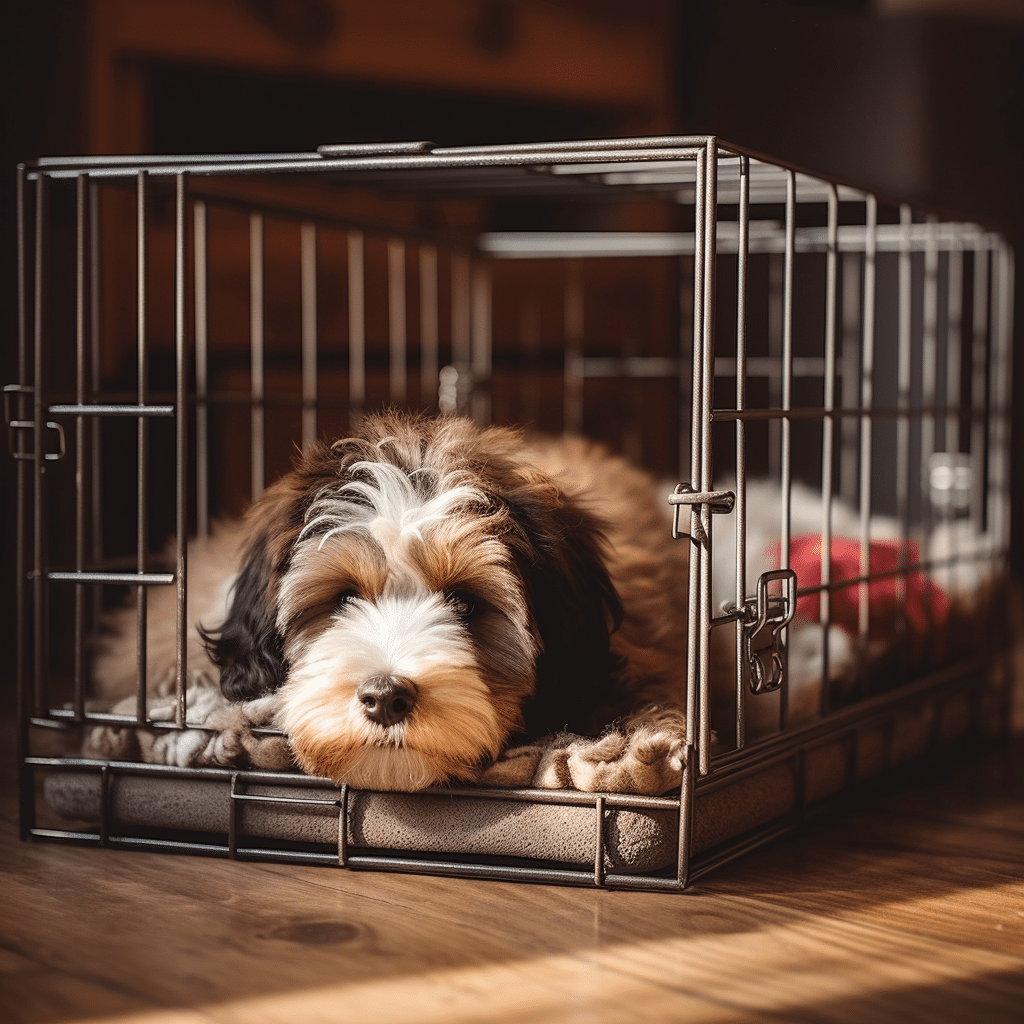
Crate training benefits you and your dog. It’s an essential part of raising a happy, healthy canine companion.
- Safety and Security Provided by Crates
- Prevention of Destructive Behaviors
- House Training Assistance
- Reduction in Separation Anxiety
- Creating Restful Spaces
- Travel Safety and Security with Crates
- Positive Association with Confinement
With all these benefits, it’s clear why crate training is so important for dogs and owners. A crate provides security, eases training, and gives your dog a relaxing retreat. By meeting their instincts, it becomes a haven. Now that you know the many advantages of crate training, you can start preparing for success!
Preparing for Successful Crate Training
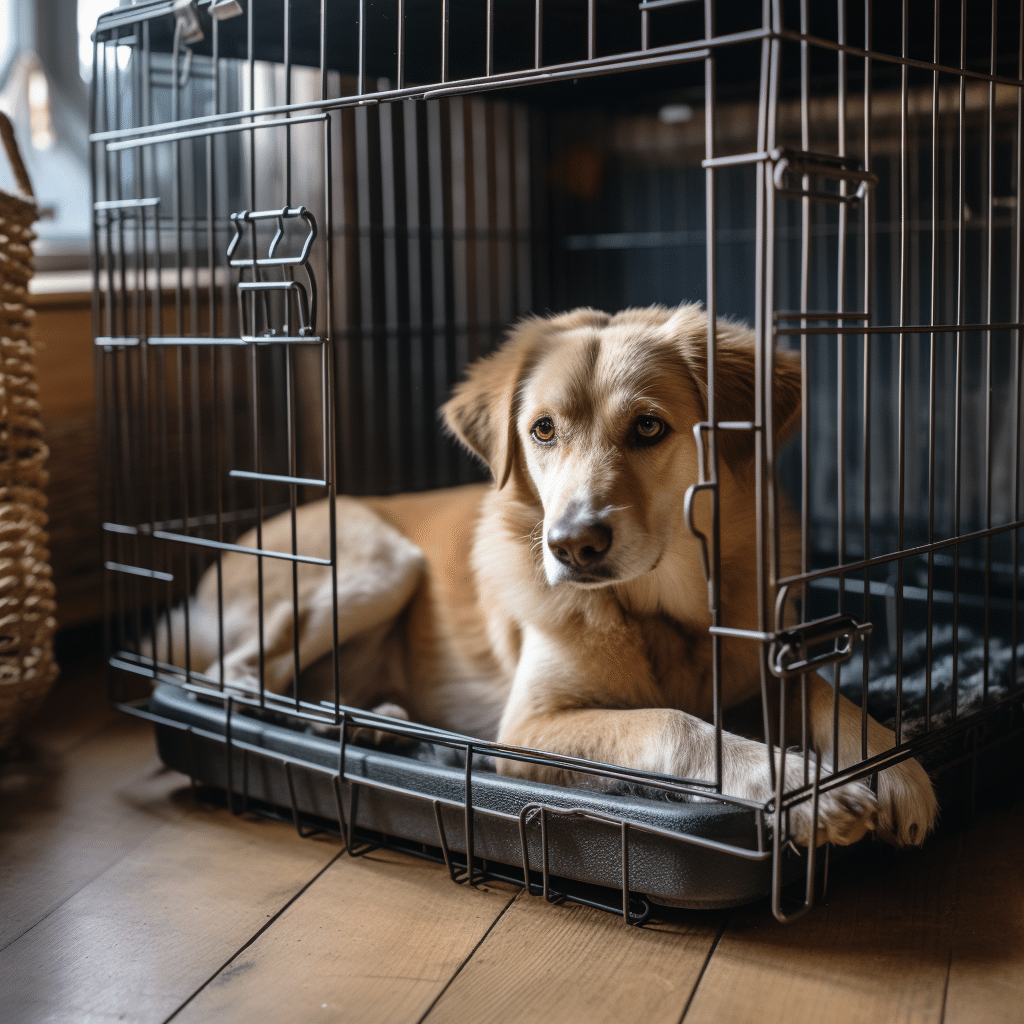
Selecting the right crate is the first step for your dog’s crate training success. The crate should be large enough for your dog to stand up, turn around, and lie comfortably – no bigger. If the crate is too large, your dog may use one end as a bathroom. Hard plastic crates are ideal for puppies and adult dogs since they are easy to clean and durable. Wire crates work for any age dog but provide less privacy. Measure your dog to choose the right size crate for their needs.
Once you have the perfect crate, open the door and place treats and toys inside to encourage your dog to enter voluntarily. Put your dog’s food bowl inside the crate at meal times and praise them for eating inside. Let your dog explore the crate at their own pace without forcing them in. It may take a few days for your dog to feel comfortable entering the crate. Remain patient and keep sessions positive.
Pick an area like the kitchen, living room or bedroom for placement of the confinement den.
Add comfortable bedding and a favorite toy to create a cozy crate environment. Consider playing soft music or using pheromone diffusers to soothe your dog. Covering the top and sides with a blanket provides additional privacy that reduces stress. However, do not cover the crate completely or your dog may overheat. Keep the crate inviting but minimalistic.
Establish a consistent crate schedule for feeding, potty breaks, training, exercise, and sleep. Puppies under three months need to go out every 1-2 hours. Older dogs can hold it for up to 8 hours. Crate your dog briefly during the day and continue praising and rewarding them for calm crate behavior. Gradually increase crate time. Limit crating to less than 8 hours per day in total. Stick to the schedule consistently.
Whining, barking, accidents and other undesirable behaviors are common at first. Remain calm and ignore the behavior until your dog settles down. Never open the crate when they are acting out. Clean any messes thoroughly with an enzymatic cleaner to prevent repeat incidents. If your dog seems extremely anxious or fearful, slow down the housetraining process.
Your puppy will successfully learn how to use their den with proper preparation, patience, and consistency. With time, the confinement area will become their safe space, providing them peace of mind when they are home alone. Now, let’s explore some effective strategies that make successful crate training possible.
Effective Strategies For Successful Crate Training
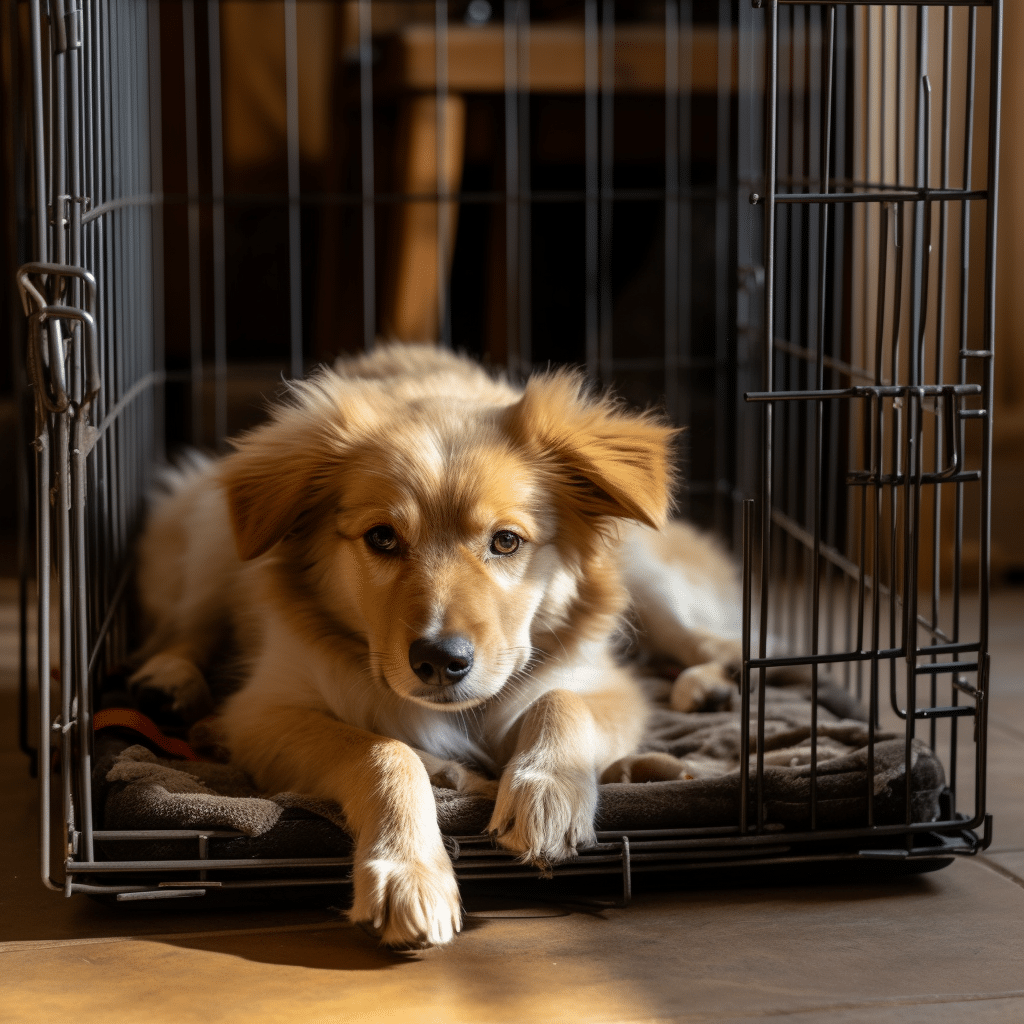
Starting early in puppyhood is key. Patience is also crucial. Have realistic expectations -crate training takes days or weeks, not hours. Stay calm. Never get angry with a puppy struggling with confinement. This will only teach them to fear. Be patient. Your pup will soon learn how to love their den!
- Starting Early and Being Patient
- Keeping Initial Training Sessions Brief
- Rewarding Calm Behavior in the Crate
- Using Cues for Crating
- Ensuring Exercise, Playtime, and Potty Breaks Before Crating
As you can see, starting crate training early with patience and positivity enables dogs to embrace their crate successfully. Keep initial sessions short and rewarding to build a solid foundation. With time and consistency, your dog will happily enter their crate when asked – it will become their den for safety and sleep! Now that you know how to crate train effectively, you can move on to troubleshooting any issues.
Troubleshooting Common Crate Training Problems
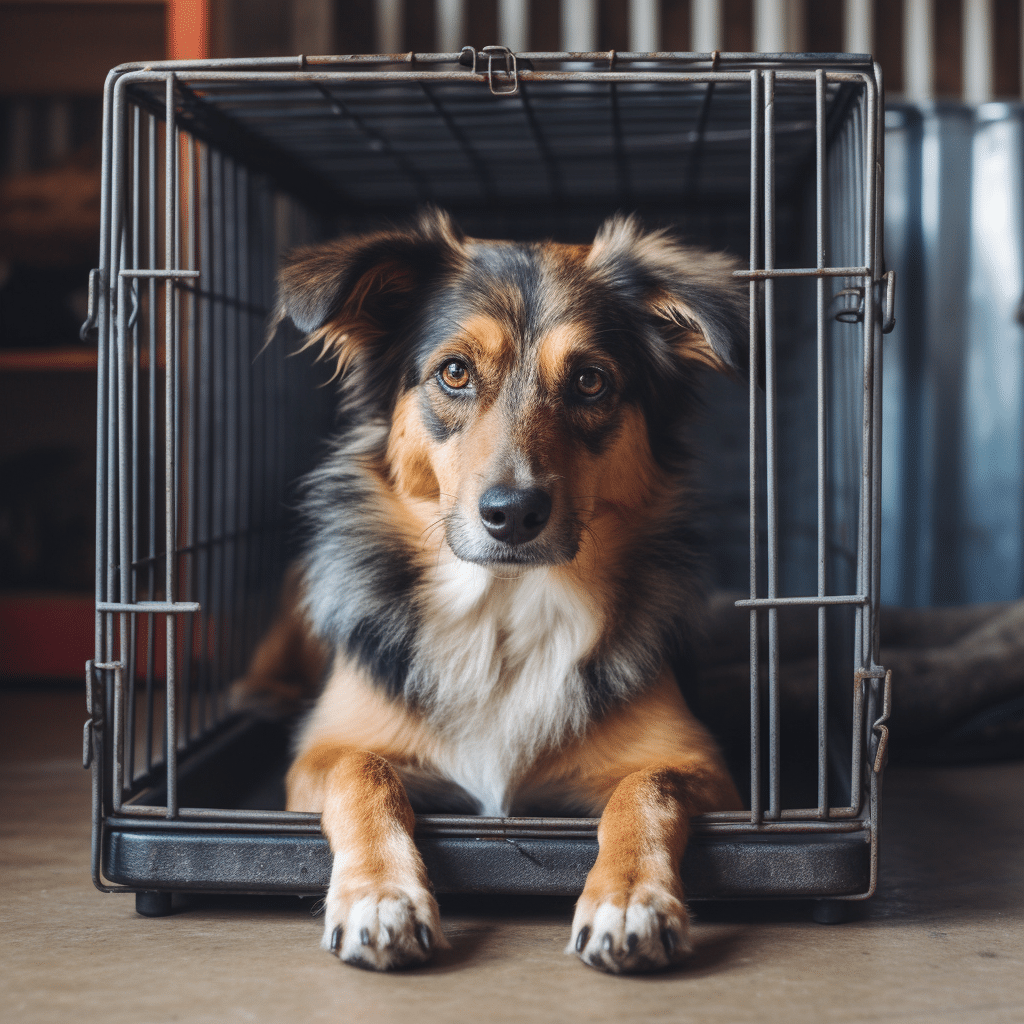
Crate training is an essential part of raising a happy, well-behaved dog. However, some common problems can arise that test an owner’s patience. Don’t worry – with some troubleshooting, you can get your pup comfortable with their crate quickly.
- Dealing with a Dog Who Cries or Barks in the Crate
- Managing Potty Accidents Inside The Crate
- Helping Fearful or Anxious Dogs Adapt to Their Crate
With a patient and positive approach, even sensitive dogs can learn to see their crate as a safe space. Around 84% of dogs who undergo slow crate training are eventually comfortable spending a few hours inside.
Conclusion Importance of Consistency & Call to Action
As a dog lover and content creator for Yappy Life, I cannot emphasize enough the immense value of proper crate training for your furry companions. Having raised three pups of my own, I’ve seen firsthand how effective crate training establishes structure, provides comfort, and prevents problem behaviors in dogs. Implementing the strategies outlined in this guide will set you and your dog up for crate training success.
Key Takeaway – When done right, crate training creates a safe space for your dog to relax, prevents destructive behaviors when unsupervised, assists with house training, reduces separation anxiety, and establishes a positive association with confinement – all of which lead to a happier, better behaved dog.
The key is consistency and patience. Remain calm and positive during the process, even when challenges arise. With time, your dog will learn to see their crate as a comfortable retreat rather than a punishment. Proper crate training truly benefits both the pet and the owner. At Yappy Life, we’re passionate about equipping dog owners like you with the knowledge you need to build a rewarding relationship with your furry best friend.
We hope you found this crate training guide helpful. If you’re ready to introduce your dog to a crate, be sure to **download our free Crate Training Checklist**. This handy PDF provides a step-by-step timeline, dos and don’ts, training schedule, and more to set you up for crate training success. Give your dog the gift of a comfortable, secure crate and see the positive difference it makes in their behavior and your bond. We can’t wait to hear your crate training success stories!
Frequently Asked Questions about Why Crate Training Your Dog
1. What is crate training and why should I do it?
Crate training teaches your dog to view their crate as a safe and comfortable space. It involves gradually introducing your dog to the crate, using positive reinforcement techniques, and providing them with a secure environment when you cannot supervise them. Crate training can be beneficial for various reasons, including facilitating housebreaking, preventing destructive behavior, and ensuring your dog’s safety.
2. Is crate training cruel or inhumane?
No, when done correctly, crate training is not cruel or inhumane. Dogs have an instinctual denning behavior and often seek out small enclosed spaces for comfort. A properly introduced crate becomes their den-like sanctuary where they feel secure. Ensuring that the crate is appropriately sized, comfortable, and never used as a form of punishment is essential.
3. How long should I leave my dog in the crate?
The duration for which you can leave your dog in the crate depends on their age, physical needs, and level of training. Puppies have limited bladder control and should not be crated for extended periods without breaks for elimination and exercise. Adult dogs can generally stay in the crate for several hours at a time but should still be given regular opportunities to stretch their legs and relieve themselves.
4. Can I use a crate if my dog has separation anxiety?
Yes, crates can be helpful for dogs with separation anxiety as they provide a sense of security during your absence. However, it’s crucial to address the underlying anxiety issue through proper training techniques or seeking professional help alongside using the crate.
5. Should I lock my dog in the crate at night?
Locking your dog in the crate at night depends on their needs and behavior patterns. Some dogs may feel more secure with the door closed, while others prefer having it open. It is essential to observe your dog’s comfort level and make adjustments accordingly.
6. Can crate training help with housebreaking?
Yes, crate training can be an effective tool for housebreaking your dog. Dogs naturally avoid soiling their sleeping area; a properly sized crate can encourage them to hold their bladder until they are taken outside. You can expedite the housebreaking process by establishing a routine and rewarding appropriate elimination behavior.
7. Is it too late to start crate training if my dog is already an adult?
It is never too late to start crate training, even if your dog is already an adult. While puppies tend to adapt more quickly, adult dogs can also learn to associate the crate with positive experiences through gradual introduction and positive reinforcement techniques.
8. Can I use the crate as punishment for my dog?
No, the crate should never be used as a punishment for your dog. The purpose of crate training is to create a positive association with the crate as a safe space, not as a place of confinement or isolation due to misbehavior.
9. How do I introduce my dog to the crate?
To introduce your dog to the crate, place treats or toys inside while leaving the door open. Allow them to explore at their own pace without any pressure or force. Gradually increase the time spent in the crate while providing positive reinforcement, such as treats or praise, when they enter voluntarily.
10. Are there any alternatives to using a crate for confinement?
Yes, there are alternative confinement methods such as using playpens or baby gates in designated areas of your home that are puppy-proofed and safe for your dog’s exploration. However, crates offer additional benefits like portability and creating a den-like environment that many dogs find comforting during rest or stress.

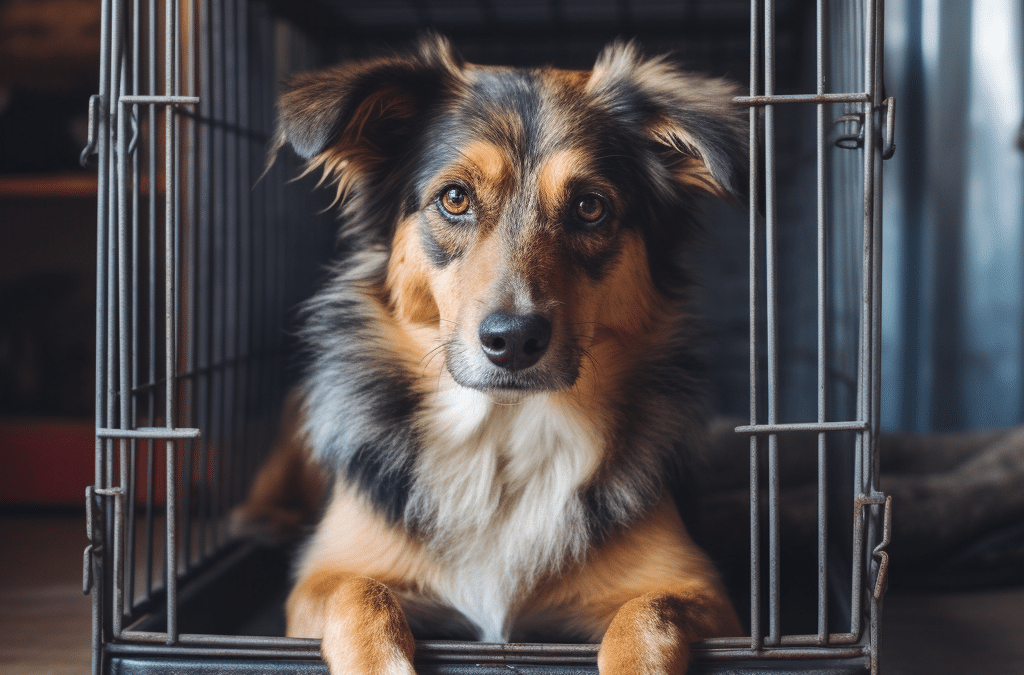



Recent Comments